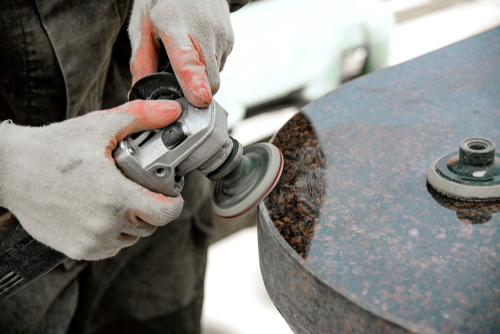
The Benefits Of Marble Polishing In Improving Indoor Air Quality
March 13, 2023
Protecting Your Marble Surfaces Post-Polishing
June 27, 2023The Dos And Don’ts Of Cleaning Marble

The Dos And Don’ts Of Cleaning Marble. Marble is a beautiful, luxurious natural stone that adds elegance to any home. It comes in various colors and unique patterns that make it one-of-a-kind. However, owning marble requires extra care and maintenance to keep its luster for years.
One thing you should know about cleaning marble is the importance of using the right products since harsh chemicals can damage your precious investment. In this article, we’ll take you through some dos and don’ts when keeping your marble pristine over time! Read on!
Tips for Properly Cleaning Marble Surfaces

Marble is a beautiful natural stone that can add elegance to any home. Its timeless beauty, durability, and resistance to scratches make it the preferred choice for many homeowners. However, marble requires careful maintenance and cleaning to preserve its luster.
Cleaning marble surfaces may seem easy, but improper cleaning methods can cause damage to the surface or even ruin it altogether. In this article, we’ll provide some dos and don’ts of cleaning marble surfaces so you can keep them looking their best.
Do Use Gentle Cleaners on Your Marble Surface
When choosing a cleaner for your marble surface, always opt for one gentle on the stone. Abrasive cleaners such as bleach or ammonia-based products are too harsh because they contain chemicals that corrode natural stones like marble over time.
Instead of using harsh cleaners like these when cleaning your marbles, consider buying mild soap solutions specifically made for use on delicate materials such as granite countertops or limestone floors which are also safe options suitable for keeping clean marbles shiny!
Don’t Use Acidic Cleaners On Your Marble Surface
Acidic substances should never be used when cleaning up stains from delicate materials, including Marbles! This is because acidic solutions- found in everyday household items such as vinegar – react chemically with calcium carbonate (the main component found in most types), causing etch marks (dull spots) that become irreversible if not attended to immediately upon noticing them appear after exposure thus making restoration difficult once established completely into affected areas.
Therefore avoid acids at all costs while maintaining cleanliness levels within living spaces where these precious rocks have been installed around walls/ceilings/floors etc.
Do Seal Your Marble Regularly
Sealing your marbles regularly helps protect against staining agents while extending their longevity and durability over the long term. Marble is porous, meaning it can absorb liquids if left unsealed.
Marble sealers are available for purchase at most home improvement stores or online, and application instructions are provided with each product. It’s essential to ensure you regularly apply a newly purchased sealant after every clean-up to maintain glossy surfaces without any etches/marks appearing!
Don’t Use Harsh Scrubbing Pads On Your Marble Surface

Cleaning pads such as steel wool or scrubbing brushes should never be used on marble surfaces because they’re too abrasive! Even when applied gently, these cleaning tools can cause scratches in your delicate marbles.
Instead, use soft cloths made from microfiber material that won’t scratch surfaces but still manage to remove dirt particles efficiently, leaving behind shiny-looking marbles throughout their lifetime.
Do Blot Stains Immediately
It’s essential to always blot stains immediately upon noticing them on marble surface areas – this helps prevent further discoloration caused by spilled substances like wine/fruit juices/oils etc., before becoming permanent marks that require extensive restoration work done later down the line once established into affected regions around living spaces where these rocks have been installed.
Blotting out spills with gentle cleaners helps restore cleanliness levels while preserving glossiness within these precious stones all year round!
Don’t Allow Water To Accumulate On The Surface
Water accumulation should be avoided at all costs when it comes to cleaning Marbles; since standing water causes harm leading to dullness, thus making appearances less appealing than initially expected when first bought floors/walls/furniture pieces constructed using natural stone slabs containing calcium carbonate mineral components found predominantly amongst various types.
Thus, mopping up spillages immediately helps preserve hygiene standards, ensuring no spots appear upon drying off, ultimately resulting in sparklingly bright shining finishes throughout their lifetime usage period.
The Dos And Don’ts Of Cleaning Marble – Final Thoughts

In conclusion, cleaning marble surfaces requires careful attention and patience. Following these dos and don’ts can keep your marble surfaces looking beautiful for years. Always opt for gentle cleaners, avoid acidic substances or harsh scrubbing pads while blotting out stains immediately upon noticing them without allowing water accumulation on the surface!



